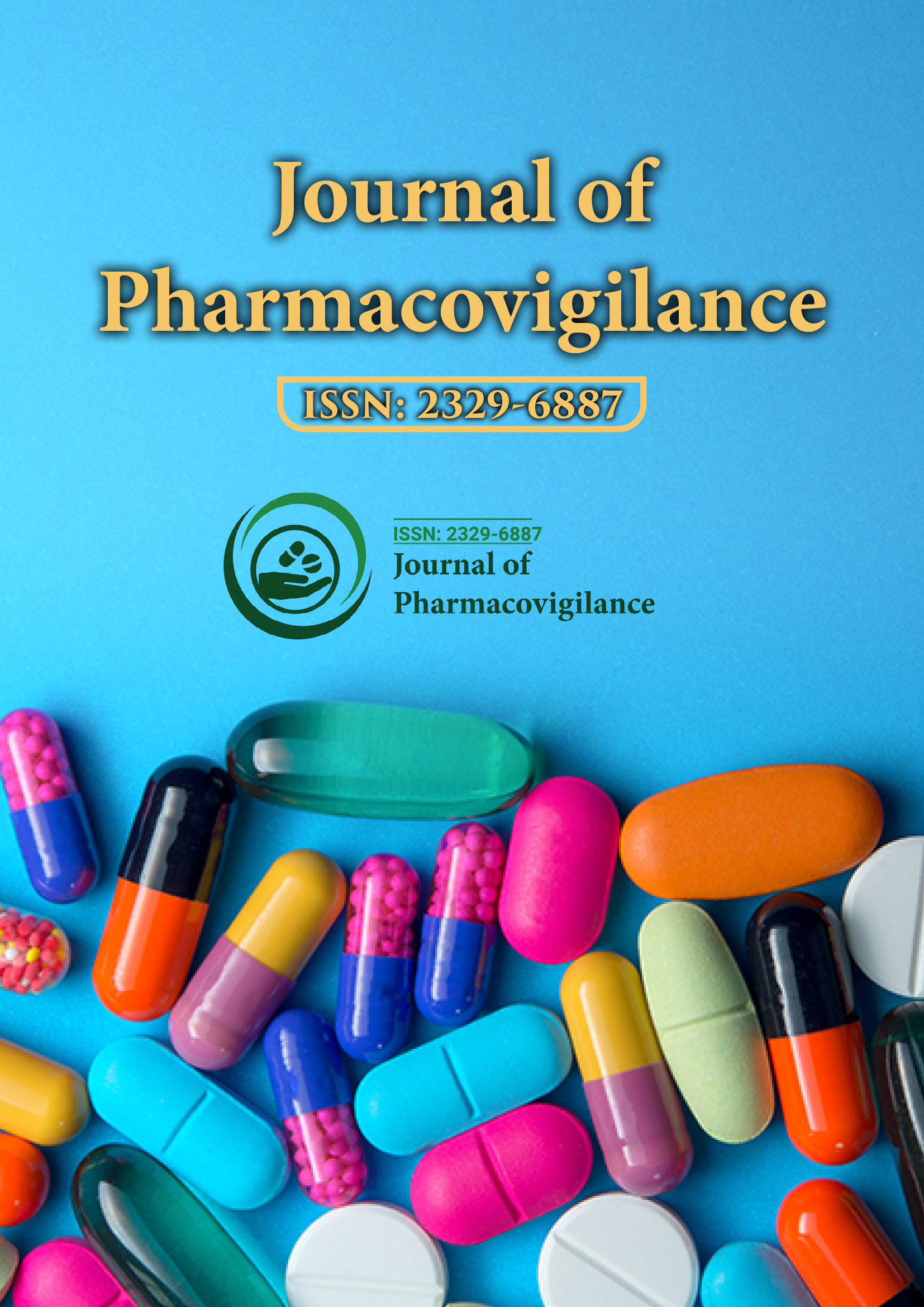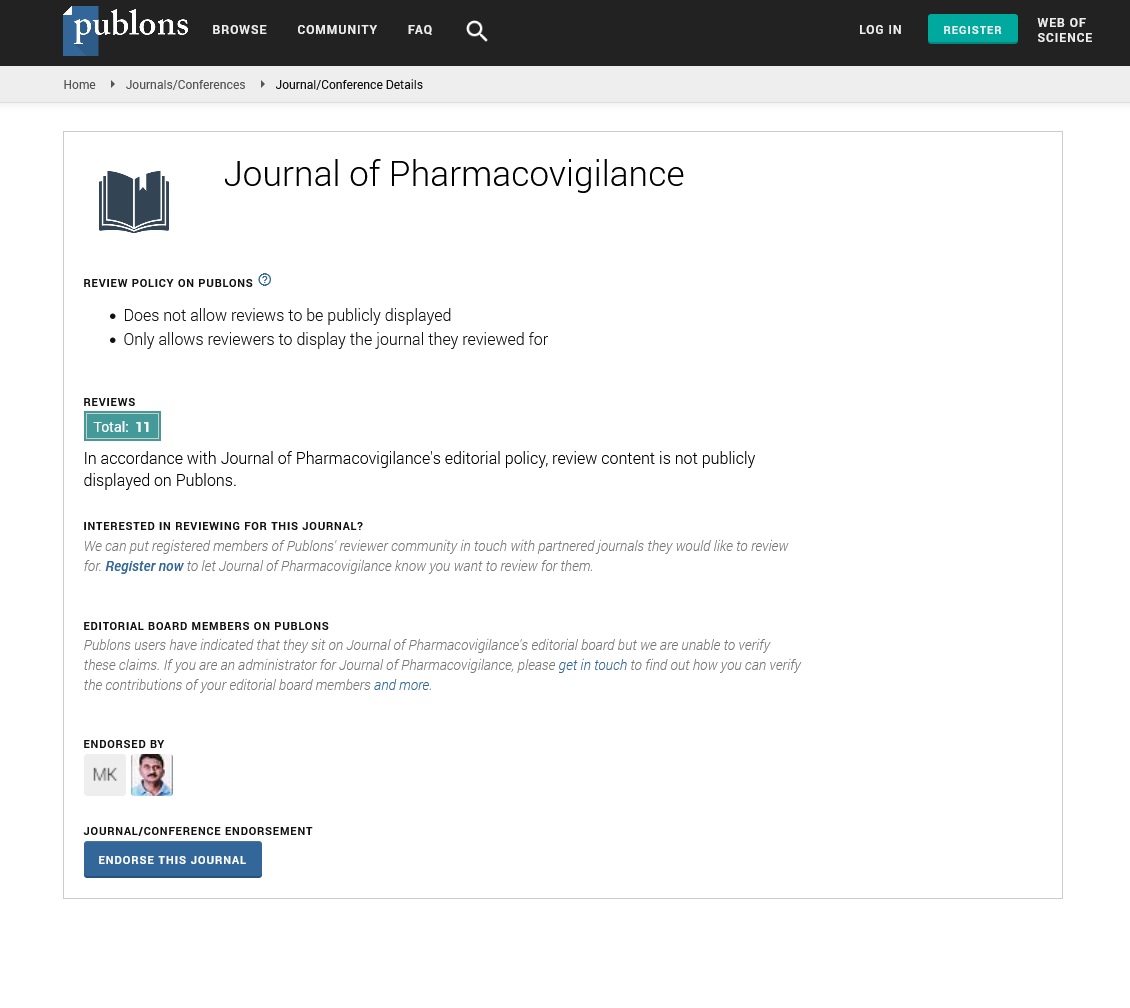Indexed In
- Open J Gate
- JournalTOCs
- The Global Impact Factor (GIF)
- RefSeek
- Hamdard University
- EBSCO A-Z
- OCLC- WorldCat
- Publons
- Euro Pub
- Google Scholar
Useful Links
Share This Page
Journal Flyer

Open Access Journals
- Agri and Aquaculture
- Biochemistry
- Bioinformatics & Systems Biology
- Business & Management
- Chemistry
- Clinical Sciences
- Engineering
- Food & Nutrition
- General Science
- Genetics & Molecular Biology
- Immunology & Microbiology
- Medical Sciences
- Neuroscience & Psychology
- Nursing & Health Care
- Pharmaceutical Sciences
Commentary - (2023) Volume 11, Issue 3
The Role of Pharmacovigilance in Drug Development: Protecting Patients From Harm
Henry Meyer*Received: 01-May-2023, Manuscript No. JP-23-21810; Editor assigned: 03-May-2023, Pre QC No. JP-23-21810(PQ); Reviewed: 17-May-2023, QC No. JP-23-21810; Revised: 24-May-2023, Manuscript No. JP-23-21810(R); Published: 31-May-2023, DOI: 10.35248/2329-6887.23.11.431
About the Study
In healthcare, patient safety is of preeminent. The development and introduction of new drugs offer hope for improved treatments and better outcomes. However, with innovation comes the responsibility to ensure the safety and well-being of patients who rely on these medications. This is where pharmacovigilance plays a vital role in the drug development process, safeguarding patients from potential harm associated with the use of pharmaceutical products.
Pharmacovigilance, derived from the Greek words "pharmakon" meaning drug and "vigilare" meaning to keep watch, encompasses the science and activities related to the detection, assessment, understanding, and prevention of adverse effects or any other drug-related problems. Its primary objective is to improve patient safety by identifying, evaluating, and minimizing the risks associated with medication use. By monitoring drugs throughout their lifecycle, from preclinical trials to postmarketing surveillance, pharmacovigilance provides a crucial mechanism for detecting and responding to safety concerns.
During the early stages of drug development, preclinical studies are conducted to assess the potential risks and benefits of a new drug candidate. While these studies provide valuable insights, they are limited in their ability to predict all possible adverse effects. As a result, clinical trials are conducted to evaluate the drug's safety and efficacy in a controlled patient population. Pharmacovigilance activities begin at this stage, as adverse events and side effects are carefully monitored and reported. By capturing and analyzing this data, researchers and regulatory authorities can make informed decisions about the drug's safety profile before it reaches the market.
Once a drug is approved and made available to the public, pharmacovigilance continues its vigilant oversight through postmarketing surveillance. This phase involves monitoring the drug's real-world use and identifying any previously unknown or rare adverse reactions that may not have been apparent during the clinical trials. Healthcare professionals and patients are encouraged to report any suspected adverse events to regulatory authorities or the manufacturer, allowing for a comprehensive assessment of the drug's safety. This ongoing monitoring ensures that any emerging safety signals are promptly detected, leading to appropriate actions such as label changes, dosage adjustments, or even withdrawal of the drug from the market if necessary.
The strength of pharmacovigilance lies in its ability to facilitate the collection and analysis of data from multiple sources, including spontaneous reports, observational studies, and registries. This collaborative approach enhances the identification of potential safety concerns and improves our understanding of the risk-benefit profile of a drug. Furthermore, pharmacovigilance systems operate globally, promoting the exchange of information and enabling the early detection of safety signals that may have been missed at a local level.
Pharmacovigilance is not solely limited to monitoring known drugs; it also plays a crucial role in assessing the safety of vaccines and addressing vaccine-related concerns. With the ongoing COVID-19 pandemic, the importance of pharmacovigilance in ensuring the safety of vaccines has been highlighted. Rapid identification and evaluation of potential adverse events associated with COVID-19 vaccines have allowed for timely interventions and enhanced public confidence in vaccination programs. Through close collaboration with regulatory agencies, healthcare providers, and the public, pharmacovigilance has been instrumental in guiding vaccination strategies and mitigating risks.
To maximize the effectiveness of pharmacovigilance, it is essential to nurturing a culture of reporting and transparency. Healthcare professionals and patients should be encouraged and empowered to report any suspected adverse events, no matter how trivial they may seem. Timely and accurate reporting is crucial for capturing and assessing safety signals, enabling regulatory agencies and pharmaceutical companies to take appropriate action. In addition, transparency in the communication of safety information ensures that healthcare professionals and patients are well-informed about the potential risks associated with medication use, allowing for informed decision-making and patient-centered care. It is through the collective efforts of healthcare providers, regulatory agencies, pharmaceutical companies, and patients themselves that pharmacovigilance can fulfill its mission of protecting patients from harm.
By actively monitoring, evaluating, and responding to safety concerns throughout the drug development process, pharmacovigilance serves as a critical safeguard, promoting the ongoing improvement of patient safety and the delivery of effective and reliable healthcare. As the field of pharmacovigilance continues to evolve and adapt to the everchanging landscape of drug development, its importance as a cornerstone of patient protection cannot be overstated.
Citation: Meyer H (2023) Role of Pharmacovigilance in Drug Development: Protecting Patients from Harm. J Pharmacovigil. 11:431.
Copyright: © 2023 Meyer H. This is an open-access article distributed under the terms of the Creative Commons Attribution License, which permits unrestricted use, distribution, and reproduction in any medium, provided the original author and source are credited.

